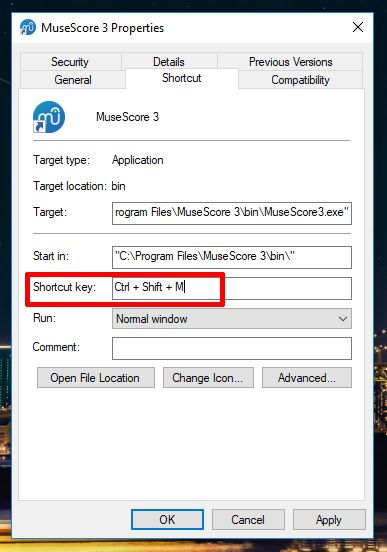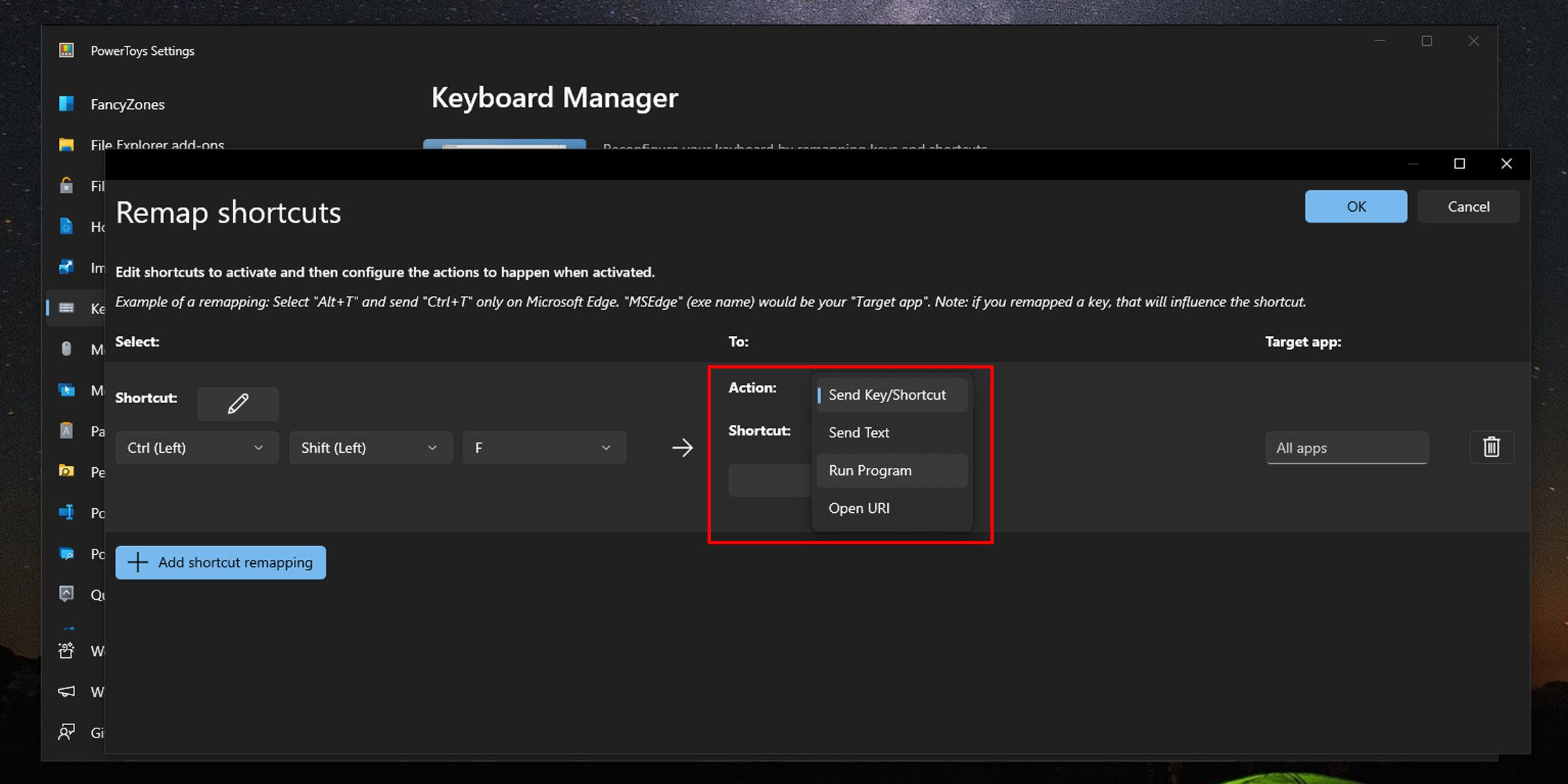
Optimize Task Performance: Window's Custom Keys

Optimize Task Performance: Window’s Custom Keys
Disclaimer: This post includes affiliate links
If you click on a link and make a purchase, I may receive a commission at no extra cost to you.
Key Takeaways
- Easily assign keyboard shortcuts to desktop, Start menu, and Taskbar items for improved productivity.
- Use the latest version of Microsoft PowerToys to set up keyboard shortcuts for programs.
- Tweak how and when to deploy keyboard shortcuts by leveraging the strength and depth of PowerToys.
Did you know that you can set a keyboard shortcut for just about any program in Windows? When you want to open a specific program in a hurry, all you need to do is quickly press a few keys and you’re in. Here’s how.
1. How to Assign a Keyboard Shortcut to a Shortcut Link on Your Desktop
One of the best ways to improve your productivity is to navigate using as few clicks and keystrokes as possible. One way to do that is by setting up keyboard shortcuts. If you’re interested, check out our ultimate guide to Windows keyboard shortcuts .
Once you’ve settled on the programs you want to assign a keyboard shortcut to, do the following:
- Right-click on the program shortcut and select Properties.
- Under the Shortcut tab, in the Shortcut key field, simply type the shortcut you want to assign to the program and click the OK button.

Windows shortcuts must take the form:
- Ctrl + Alt + [key]
- Ctrl + Shift + [key]
- Ctrl + Shift + Alt + [key]
Now, when you press the shortcut key combination, the program will be launched.
2. How to Assign a Keyboard Shortcut to a Shortcut Link in the Start Menu
The process is pretty much the same here, with a few extra steps. Here’s how:
- Open the Start menu.
- Find the item to which you want to assign a keyboard shortcut.
- Right-click it and go to More > Open file location.

- Right-click on the shortcut and select Properties.
- In the Shortcut key field, type in the keyboard shortcut you want to have assigned to the program.
3. How to Set up a Keyboard Shortcut for a Shortcut Link on the Taskbar
Creating a keyboard shortcut for an item on your taskbar is easy. Here’s how to do it:
- Right-click on an item appearing on the Taskbar.
- Right-click on the program and click on Properties.

- Add a keyboard shortcut to the Shortcut key field.
4. How to Remove Previously Assigned Keyboard Shortcuts
To remove a keyboard shortcut, navigate to the program shortcut’s properties and delete the entry in the Shortcut key field. This should reset it to None and remove the associated keyboard shortcut.
5. How to Add a Keyboard Shortcut to Literally Any Program in Windows, Using Microsoft PowerToys
There are so many things you can do with PowerToys ; it’s just that powerful a tool. The latest edition of PowerToys—version 0.79—includes the ability to create a keyboard shortcut for just about anything. This makes it much easier to set up keyboard shortcuts in Windows.
To download and install PowerToys , you’ll need to go to the official Microsoft page for the utility and follow a few simple steps.
You can either get it from the Microsoft PowerToys GitHub releases page or the Microsoft Store, and you can also install it using the Windows Package Manager.
Here’s how to set up a keyboard shortcut in Windows using Microsoft PowerToys:
Once installed, open PowerToys.
In the left pane, scroll down to Keyboard Manager.
Make sure the checkbox labeled Enable Keyboard Manager is enabled.
Click on Remap a shortcut.

Then click on the Add shortcut mapping button.

Under Shortcut, click on the button with the pen icon. Then press the shortcut key combo you want to set.

Under Action, click on the drop-down and select Run Program.

Under App, either enter the path of the program you want to add to this shortcut, or click the Select program button to browse and select an application.

If you leave the Start in field blank, the shortcut will work throughout the Windows environment. If you select a path here, the shortcut will only work when you are in that environment or program.
The If running field tells Windows how to handle the command if the program is already open and running. You can set this to one of several options: show the open window; open another instance of the program (if possible); close the program; do nothing; or end the entire program task.
To remove a shortcut set up using PowerToys, simply open the utility, navigate to Keyboard Manager, select Remap a shortcut, and click on the delete button to the right of the specific shortcut you wish to remove.
With Windows keyboard shortcuts set up, your work should be a lot more productive. Microsoft PowerToys can help you achieve this easily, but there’s so much more you can do with this utility for power users , all in one place.
Did you know that you can set a keyboard shortcut for just about any program in Windows? When you want to open a specific program in a hurry, all you need to do is quickly press a few keys and you’re in. Here’s how.
Also read:
- [New] Mastering Reach Without Money YouTube Video Advancement Strategies for 2024
- [New] Visual Anonymous How to Make Faces and Objects Invisible
- [Quick Fix] Stuck at Optimizing Shaders Star Wars Battlefront II
- [Updated] 2024 Approved XChange Your Thoughts on Better Alternatives
- [Updated] InstaMosaic Syncing Videos Across OSes
- Explore Words in a Flash - Windows 11 Definiton Hub
- Jumpstart Your Valorant Pace on Windows PC
- Revel in Pimax Crystal VR: Brilliant, Yet Imperfect Performance
- Troubleshooting and Solving Device Misconfiguration: Insights Into Error Code 1
- Understanding Blue Screen Dumps: A Comprehensible Guide
- Understanding DuckDuckGo: A Comprehensive Guide on Its Security Features
- Unveiling the Potential of the Large-Scale Stanley J5C09: A Review of Its Robust Abilities and Features
- Windows Hello Fingerprint Login Configuration Guide
- Windows Strategies: Unzipping Multiple Files Simultaneously
- Title: Optimize Task Performance: Window's Custom Keys
- Author: Richard
- Created at : 2024-12-11 17:18:16
- Updated at : 2024-12-12 20:19:36
- Link: https://win11-tips.techidaily.com/optimize-task-performance-windows-custom-keys/
- License: This work is licensed under CC BY-NC-SA 4.0.






